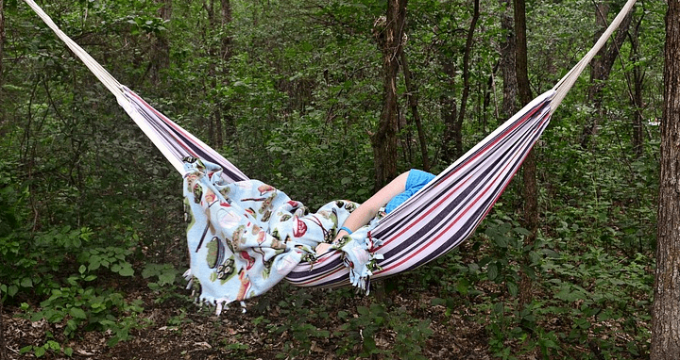There are 5 types of screening interviews which can be compared to a special form of "group dynamics" with only two participants. The interviewer and the interviewee form a unique “chemistry”. A person may behave differently when interviewed separately by two interviewers.
The main objective of the interview in a selection process is to quickly and practically identify the main characteristics of the profile of the candidates to be hired or promoted. The interviewer must find out how likely the candidate is to perform well in the work, given the specific culture of the company and other variables of the environment in which the person.
Advertisements
The interview is undoubtedly the most used technique in all organizations, it has numerous applications, from a preliminary interview to recruitment, a performance interview, a social interview, even a termination interview, which can be a subsidy to the human resource management policies of the organizations.

Advertisements
In this article you will find:
Purpose of the selection interview
The purpose of the interview is to give the interviewer a reasonable degree of assurance about the candidate's future performance in the position.
There are two difficulties in achieving the main objective of the interview:
Advertisements
The first difficulty is when the candidate is interviewed by the executive who will be his immediate superior in the new position. Most executives do not have the training necessary to conduct an interview to reasonably project the focus and performance of the candidate once hired. Therefore, the interview often turns into a friendly conversation between two people who have just met.
After the interview, the most concrete thing the interviewer could do was discover that the candidate is a "good guy", who does or does not have the knowledge and experience necessary for the position. But the candidate's future performance remains to be seen.
Advertisements
The second difficulty is that the specialized selectors do not know important details of the position that the candidate will occupy. The information on the job profile that reaches the selectors is superficial, sometimes influenced or distorted by the perception of the executive who defined the job profile.
Types of selection interviews
Fully standardized interview
Structured, closed or direct interview, with pre-established scripts, in which the candidate is asked to answer standardized and previously elaborated questions. Despite their apparent limitation, they can take a variety of forms, such as multiple choice, true-false, yes-no, like-dislike, shape identification, etc.
Advertisements
Standardized interviews only for questions or concerns
Questions previously elaborated, but that allow an open answer, that is, a free answer.
The interviewer will receive a verified list of questions that he should ask in order to gather information from the responses that the interviewee gives.
Executive interview
Here the interviewer will not specify the questions to ask, but rather a desired type of response is sought. This type of interview is done only to know some spontaneous concepts that the interviewees give. The interviewer will need to apply it to formulate the questions at the same time that he is advancing in order to obtain the information required in the answers.
Non-directive interview
It does not specify either the questions or the required answers. They are completely free interviews and whose sequence and orientation is in charge of each interviewer. They are criticized for their lack of consistency, since there is no pre-established script or itinerary for each interview.
Behavioral interview
Technique that allows evaluating the candidate's competencies, developed throughout his professional career, in relation to the positions he held. The questions require the candidate to describe actions, behaviors, and feelings at various points in their career.
The interview should be planned in such a way that specific open questions related to professional situations are used, leading to the answer with past action verbs.
The challenge of knowing the positions well
What is a job profile? Briefly, we can say that it is the combination of two attributes:
- The technical requirements such as knowledge, experience, skills, special requirements and others related to the field of knowledge and tasks to be performed.
- The professional performance style that the person should have in order to perform satisfactorily in the position, or at least have a high probability of having the expected performance.
Technical requirements are usually not very difficult to establish. The area director, manager or supervisor will be able to define these requirements with relative ease.
Already the professional style of acting is something abstract, still subject to the most varied interpretations, only depending on the style of who is sending the opinion or defining this component of the profile labor.
Choose the right person for each position
The most complex part of the selection process is identifying the person's acting style. Assuming that a person has the technical skills, it is necessary to know if he will use his technical knowledge to act as expected and produce the expected results.
There are two main ways to analyze the acting style of the person applying for a position:
- So we could, for simplicity, call "what the person is inside", generally revealed by the tests and instruments used by professional selectors.
- By what the person actually does, usually detected or confirmed in the interview. A person may have the potential and knowledge to perform a task, but may not have the motivation to do that type of task well.
The first form of evaluation is largely dominated by professionals specialized in selection.
Already the second form of evaluation is little used and is the cause of hiring exceptional professionals in their field, but it did not manage to present the performance that is expected of them.
The interview should be oriented in a way that captures as many clues as possible about the specific types of activities that the candidate carries out with determination and pleasure, allowing a reasonable projection of his performance in the Market Stall.
Observation of reality in organizations has shown that the possibilities of what a person can do are endless, making it very difficult to establish a secure connection between what you can do and what will do.


